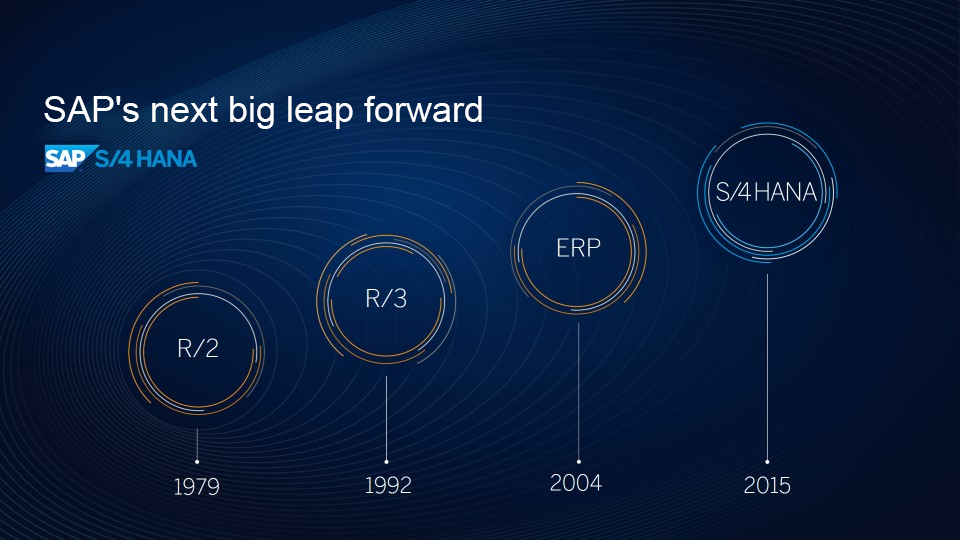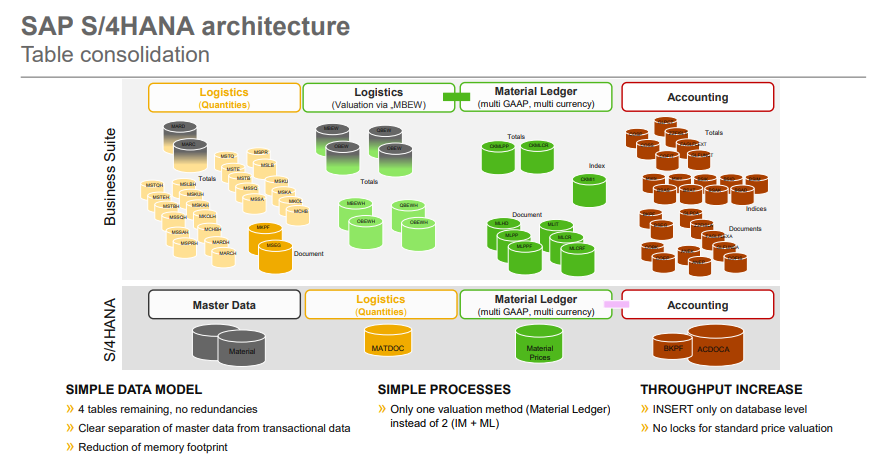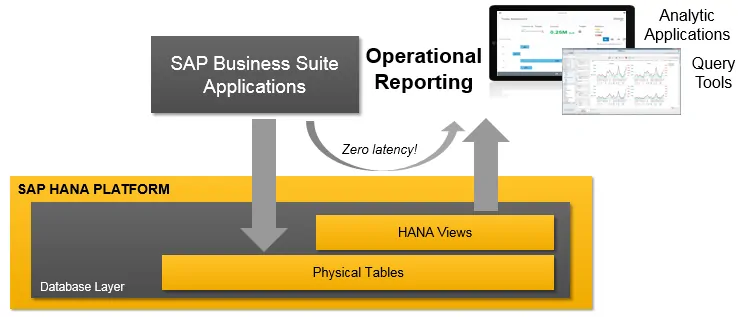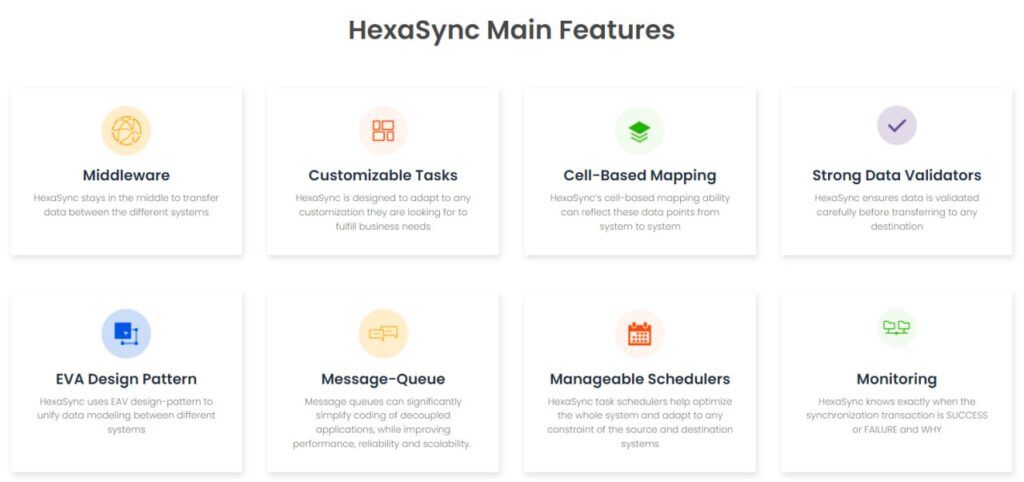What is ERP?
Before delving into the SAP S/4 HANA ERP system, it’s essential to understand what ERP is first.
According to the most basic concept, enterprise resource planning (ERP) is defined as the ability to deliver an integrated suite of business applications. ERP tools share a common process and data model, covering broad and deep operational end-to-end processes. Here we can manage all departments from Finances, Sales, products, warehouses, accounting, CRM, E-commerce, Orders, and Marketing,… The leading ERPs on the market include Microsoft Dynamics 365, and Oracle,…
ERP solutions are vital for businesses, so expanding the core system is inevitable. You need to consider implementing an ERP system that suits your organization and even changing the ERP system to adapt to each phase of your business’s development.
What is SAP S/4HANA ERP?
SAP is a leading enterprise in the global ERP solution market, and its top product is SAP S/4 HANA. Initially, SAP only focused on ERP systems. Currently, SAP provides additional solutions with many tasks to help improve customer experience, including SAP C/4 HANA previously, SAP sales management SAP Ariba, SAP budget settlement SAP Concur, SAP SuccessFactor – HR management,…
In the general concept of “Intelligent Enterprise” which includes all these applications, SAP S/4 HANA is considered as “Core digital,” the foundation responsible for SoR (System of Record), playing a significant role as infrastructure to strengthen each independent ERP business solution.
Throughout SAP’s development since 1979, SAP has released various improved versions over the years, including SAP R/2, SAP R/3, and SAP ERP. In February 2015, SAP launched a new generation of business software that quickly became popular, named SAP S/4 HANA, short for SAP Business Suite for HANA.

Please pay attention to the term Suite for HANA, as it can be easily confused with Suite on HANA.
- Suite on HANA: SAP ECC system running on the HANA database
- Suite for HANA: The next-generation ERP system was completely redesigned from scratch. The data model is simplified, the architecture is streamlined, and the user experience is improved using FIORI and advanced technologies like AI and machine learning.
SAP S/4 HANA is an ERP product that uses the in-memory database “SAP HANA” as the foundation and it is also the key point that makes the difference between SAP’s 4th generation ERP. With the SAP HANA in-memory database, S/4 HANA can be freely deployed on Publish clouds or Private clouds and of course On-premise. For example, when you deploy SAP HANA on a Publish cloud like Microsoft Azure, you can expand storage up to 60 TB (terabytes) in just a few minutes.
SAP S/4 HANA is not only simply migrating from the previous SAP ERP to SAP HANA, but also taking full advantage of SAP HANA’s features. SAP S/4 HANA also comprehensively restructures with the goal of:
- Simplifying the data model to minimize intermediate tables, keeping only the main tables.
- Simplifying processes with a single raw materials ledger
- Increasing product throughput: only add products in the database part, with no limit on standard prices.

Strengths of SAP S/4 HANA ERP?
Zero system latency

With SAP HANA’s in-memory database technology, S/4 HANA allows impressively quick data processing. Its high processing speed in most operations epitomizes the idea of an ERP system with “zero response time.” You can refer to more technological answers as to why S/4 HANA is so fast.
Analysis and reporting on the same platform
SAP S/4 HANA’s new ERP restructuring from zero simplifies the data model and processes. Instead of using a data warehouse (DWH) like in old ERP versions, SAP S/4HANA enables analysis and reporting on the same platform to access important business information quickly.
Reduced storage costs and TCO
The next benefit of quick response time is that it helps you get a better overview of your business and review process efficiency. It reduces work for departments, lowers TCO (Total Cost of Ownership), and cuts infrastructure costs thanks to reduced data size.
Flexible deployment on On-premise – Cloud – Hybrid
You can choose a method to deploy SAP S/4HANA, for example: on-premises, in the cloud, or in a hybrid way. S/4 HANA is also compatible with Microsoft Azure, allowing you to run a more strategic enterprise information system.
Moreover, deploying ERP will be better if businesses understand the roles and coordinate the main modules of SAP S/4 HANA like FI (Financial Accounting), CO (Controlling), SD (Sales and Distribution), MM (Material Management), PP (Production Planning), etc., and recent important modules like HR (Human Resources) and PPDS (Production Planning/Detailed Scheduling).
Case study – Success Story on S/4 HANA ERP
It is a typical example of the many successful customers of S/4 HANA.
Swiss Post Ltd reduced 30% TCO thanks to S/4 HANA

Before deploying S/4 HANA, Swiss Post Ltd faced profit margin issues due to increasing market competition, declining mail volume, and low interest rates. The problem lies in the fact that approximately 11 ERP data warehouses and 9 DWH are separated by the Swiss Post Division, with core processes and key data dispersed. It led to a lack of real-time transparency and high costs for consolidating financial data, customers, and suppliers.
Solution:
- Reorganize core processes and data into one “digital core”.
- Optimize the system landscape into one version of SAP S/4 HANA and one of the SAP Business Warehouse applications.
- Shift purchasing and HR management operations to the cloud (SAP Ariba, SAP SuccessFactors) and use a data management center based on the SAP Master Data Governance application.
- Use SAP Cloud platform and innovation projects supported by Focused Build for SAP Solution Manager.
Results:
- Real-time transparency in Swiss Post’s relationship with business partners.
- Standardized data processes with a single reliable data source.
- Reduce TCO (Total cost of ownership) by 30% and eliminate 70% of unnecessary interfaces.
Especially through this case study, an Intelligent Enterprise framework for future Innovation projects has been established.
Is SAP S/4 HANA ERP suitable for your business?
Since its launch, SAP S/4 HANA has faced doubts from users about whether pursuing simplicity could lead to a lack of important functions. However, the S/4 HANA team values contributions and continuously improves functions and modules.
The modules of SAP S/4 HANA show that it’s a very practical and realistic ERP solution. If you are a large-scale business wanting to manage complex business processes more efficiently, S/4 HANA is an ERP worth considering.
You need to be aware of the challenges when deploying S/4 HANA, such as:
- Besides machine learning, as the system is still being perfected, businesses need to be aware of shortcomings and gaps in the solution.
- Deployment difficulties are less about this ERP’s technology and more about the nature of organizations (the type of products they deploy).
- The transition will be very complex for large multinational companies or complex organizations looking to deploy S/4 HANA or any other ERP, requiring many changes. Thus, businesses must ensure they are prepared with risk mitigation methods and appropriate project management.
Here are some tips for you on addressing the challenges of deploying ERP systems, specifically SAP S/4 HANA.
- Before deployment, consider the value of S/4 HANA compared to your needs and compare it with other ERP systems.
- All internal teams within the organization need to be connected from the start to move forward in the future. Only then will you be able to manage your business process, determine what needs to be changed, and where to strengthen it to achieve the desired effect. Determine, not only now but in the future, how you want to leverage S/4 HANA technologies to support those business processes.
- Focus on managing changes. Pay attention to the non-technical aspect, meaning investing in adjusting the operations of your personnel and organization. Ultimately, it also plays a stronger role than S/4 HANA’s technical aspects.
In addition, to manage S/4 HANA and your other systems centrally and effectively, consider choosing third-party solutions like Hexasync – a multi-platform data integration platform.
SAP S/4 HANA Integration by HexaSync Integration Platform

“HexaSync’s SAP S/4 HANA integration is capable of handling all types of your data, specifically key data such as: Product Catalog, Warranty, Shipments, Customers, Inventory, Invoices, Orders, and Products.
HexaSync’s features support you anytime, anywhere:
- Middleware: An independent program with the application helps process all complex integrations.
- EAV Design Pattern: Enhances data modeling capabilities.
- Message Queue-Based Architecture: Reduces coding for independent applications while improving performance, reliability, and flexible scalability.
- Cell-based Mapping: Helps accurately identify data files for sustainable synchronization.
- Integration with other ERP applications: HexaSync enables easy connection of your e-commerce storefront with any ERP solution.
Automating business processes becomes simpler than ever with HexaSync, supporting the accurate and seamless synchronization of all your data at the most reasonable cost.”
Conclusion
If you have never deployed any ERP system or are using old SAP ERPs and wish to switch to S/4 HANA, the information above will be helpful for you. To delve deeper into S/4 HANA, we encourage you to explore some related articles below.